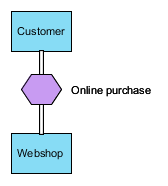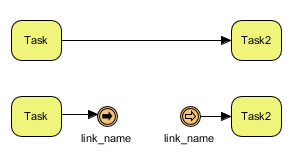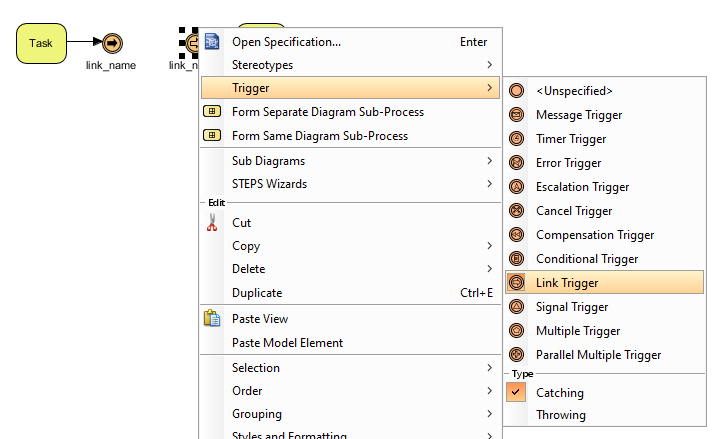Dear all
Is there any body knows how and when we can use link in BPMN business process model?
I’m not sure I understand your question, what kind of links are you referring to?
The only link I’m familiar with within the context of BPMN would be a Conversation Link; linking between a participant (aka a pool) and a conversation node. But that is already fully supported within Visual Paradigm.
Two examples…
This accounts for a conversation link. That is… the message flow which is shown here (see arrow) implies the conversation going on. As such these represent communication links.
However… at first I didn’t fully understand (also because I don’t use this specific approach often myself) but now I know what you mean. You’re looking for this:

As you can see it’s also fully supported within Visual Paradigm but not directly ‘linked’ to BPMN. You need to make a so called conversation diagram to set this up.
This link will explain how to do that.
Hope this helps!
Hi Nora_light,
If you are referring to conversation link then ShelLuser has explained it very well. If you are referring to the link event then here’s the information you may be asking for:
-
A pair of link events can be used to replace sequence flow, e.g. the following two diagrams are identical in meaning.

-
Link event is an intermediate event whose trigger is set to link, with the exit link event set to throwing (filled arrow) and the entry link event set to catching (hollow arrow). To make it clear that they are paired we would apply the same name to them.
- Link events are useful when you want to model a business process across multiple diagrams, it can act as a “jump to” link from one to another. In Visual Paradigm we currently do not support jumping with link event, but you can achieve this functionality using reference:
https://www.visual-paradigm.com/support/documents/vpuserguide/1283/32/6062_referencetod.html
- Or you may use link events to minimize the use of sequence flows to avoid “spaghetti” diagrams.
Hope this helps,
Antony.


